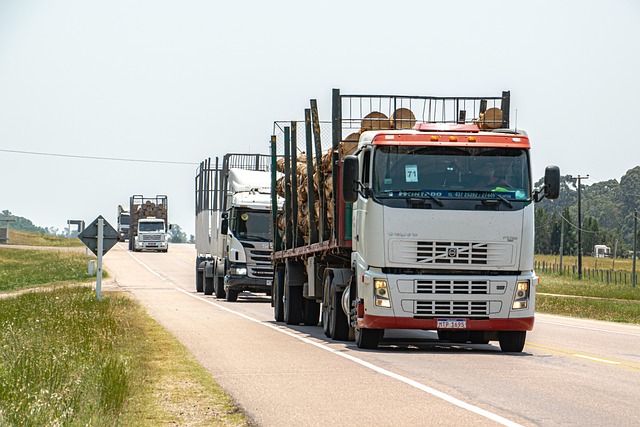Looking to register your car in California? It’s a straightforward process, but understanding the requirements and gathering the right documents is crucial. First, ensure your vehicle meets state standards. Next, collect essential paperwork, including proof of ownership and insurance. Perform a DMV VIN verification to confirm vehicle details. Then, complete the registration application online or in-person. Finally, obtain your vehicle’s official plates. Follow these steps for a smooth car registration experience in California.
- Understand Requirements for Registration
- Gather Necessary Documents
- Perform DMV VIN Verification
- Complete Online or In-Person Application
- Obtain Vehicle Registration Plates
Understand Requirements for Registration

Before registering your car in California, it’s crucial to understand the requirements for registration. The California Department of Motor Vehicles (DMV) mandates several key steps, including completing necessary paperwork and undergoing a vehicle inspection. One critical aspect is the DMV VIN verification process, where the unique identifier on your car’s title or registration certificate—the Vehicle Identification Number (VIN)—is cross-checked with the manufacturer’s records to ensure authenticity. This step helps prevent fraud and ensures only legitimate vehicles are registered.
Additionally, you may consider using a mobile vin verifier or conducting a mobile vin inspection to streamline the process. These services offer convenience by allowing you to verify your VIN at your location, saving time and effort. However, it’s essential to remember that while these tools can help ensure a smoother registration experience, they do not replace the official DMV VIN verification required as part of the California car registration process.
Gather Necessary Documents

Before you begin the registration process, make sure to gather all the essential documents required by the California Department of Motor Vehicles (DMV). This includes your vehicle’s title, which can be obtained from the seller if you’re buying a used car. Also, you’ll need a current registration certificate or a release of liability form if importing a vehicle. One crucial document is the Vehicle Identification Number (VIN) verification report. This can be easily acquired through a simple process like using a mobile vin verifier or undergoing a vin inspection to ensure the VIN is accurate and matches the vehicle’s characteristics.
Additionally, have your proof of insurance handy, as well as identification documents such as a valid driver’s license or state-issued ID card. It’s important to double-check that all information is up-to-date and correct to avoid any delays during the registration at the DMV.
Perform DMV VIN Verification

Before registering your car in California, it’s crucial to have a thorough understanding of the process and ensure all necessary steps are completed. One essential part of this is performing a DMV VIN (Vehicle Identification Number) verification. This step is vital as it ensures that the vehicle you intend to register matches the details held by the Department of Motor Vehicles (DMV). You can easily do this through a dmv vin verification process, which allows you to confirm the vehicle’s history and ensure it meets all legal requirements.
A mobile vin verification or vin inspection service is particularly convenient for California residents as it provides an efficient way to complete this task. These services use advanced technology to cross-reference your car’s VIN with comprehensive databases, offering a fast and accurate report that can significantly streamline the registration process. By ensuring your vehicle passes this critical step, you’re taking a significant step towards legally registering your car in California.
Complete Online or In-Person Application

To register your car in California, you have the option to complete the process either online or in-person at a DMV (Department of Motor Vehicles) office. Both methods involve an application process where you’ll need to provide essential information and documents. If you choose the online route, make sure to have your vehicle’s Vehicle Identification Number (VIN) handy for verification purposes. The DMV offers a convenient DMV VIN verification service to ensure the authenticity of your car’s details. Alternatively, opt for a mobile vin inspection or visit a local office for an in-person vin inspection. This initial step is crucial to ensuring that all information about your vehicle is accurate and up-to-date before proceeding with registration.
Obtain Vehicle Registration Plates

After completing your vehicle’s purchase, the next step in registering your car in California involves obtaining registration plates. This process is straightforward but requires careful attention to detail. Start by scheduling an appointment at a local California Department of Motor Vehicles (DMV) office. Bring along all necessary documents, including proof of ownership, identification, and insurance. During your visit, you’ll need to undergo a DMV vin verification process, which includes inspecting the Vehicle Identification Number (VIN) to ensure the vehicle’s authenticity.
A mobile VIN verifier can be a convenient option for those looking to streamline this process even further. This service allows you to get real-time VIN inspection results without having to visit a DMV in person. By utilizing these modern tools, you can make registering your new car in California a swift and hassle-free experience.
Registering a car in California involves understanding specific requirements, gathering essential documents, and completing a straightforward application process. After passing the crucial dmv VIN verification, you can either apply online or visit a DMV office. Once approved, you’ll receive your vehicle registration plates, ensuring your car is legally recognized on California’s roads.



